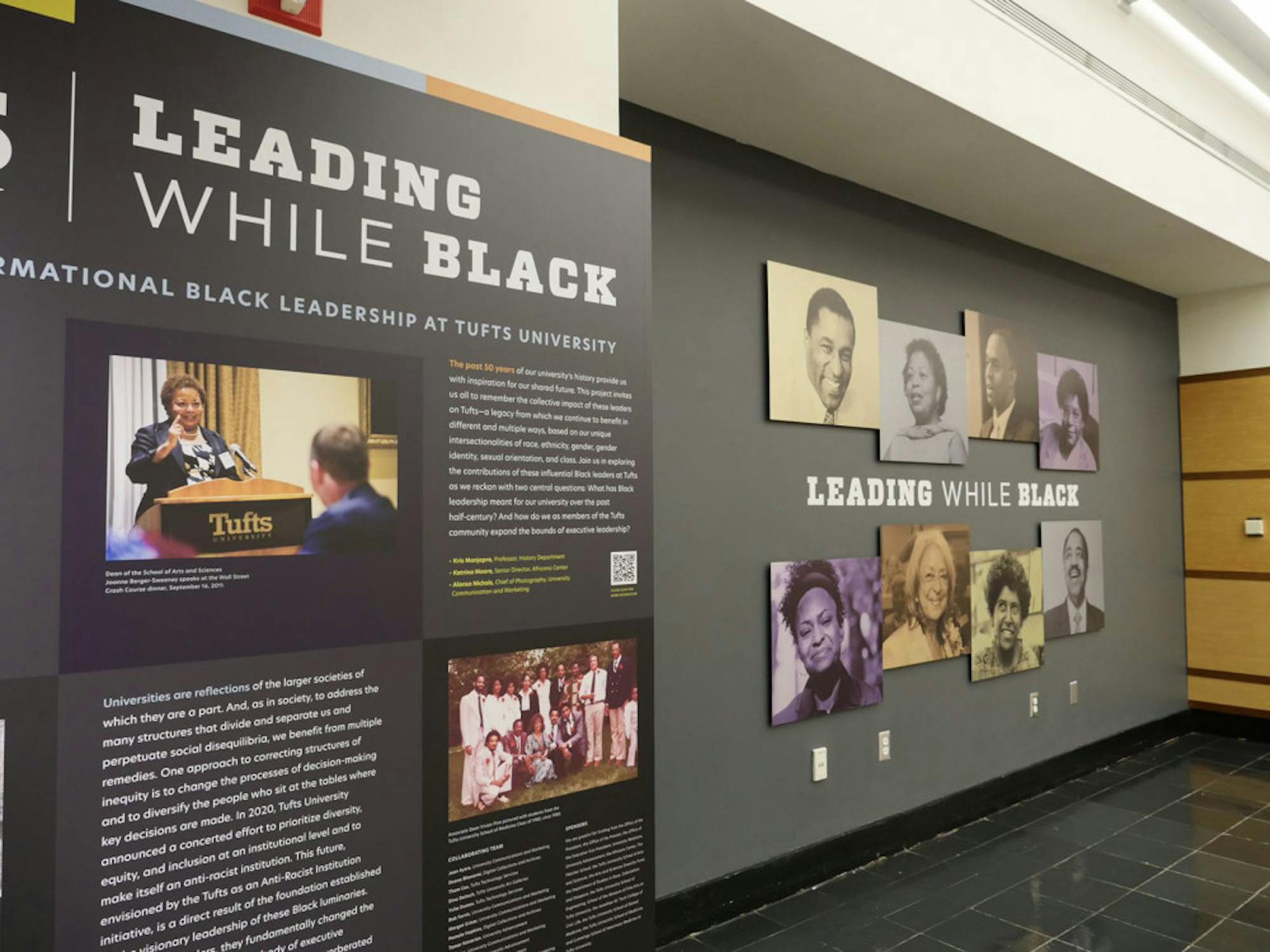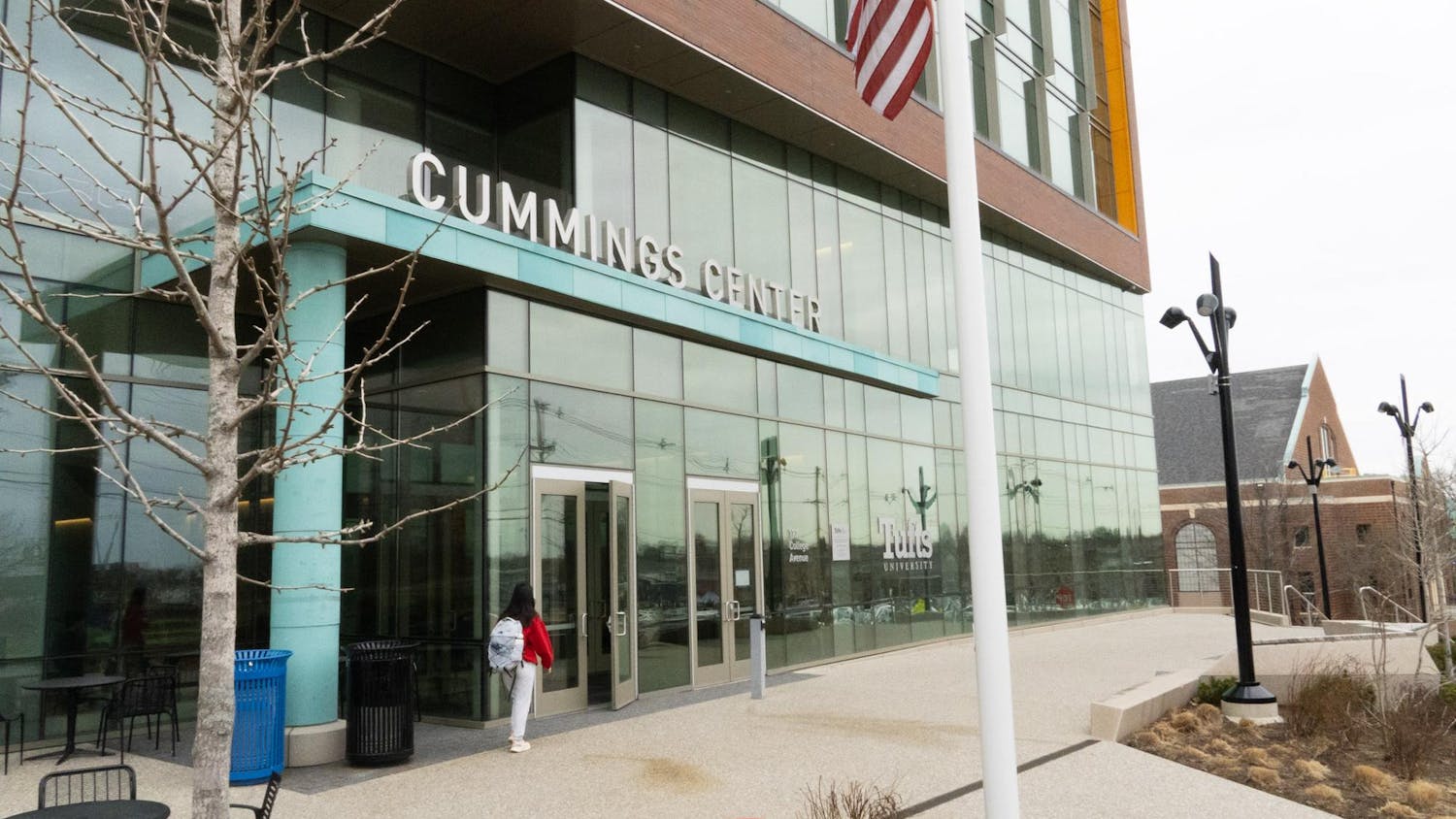Tufts will host “Leading While Black,” a livestreamed event that will highlight and celebrate the contributions of Black leadership at Tufts, on Feb. 19. The event will honor eight Black leaders who had a lasting effect on the university by transforming decision-making, advancing equity and disrupting existing norms.
“Leading While Black”also examines how the university can move forward and build on the legacy left by these leaders. The project features a multimedia archival exhibit at Tisch Library and a website featuring each honoree’s story.
The 2022 honorees are Bernard W. Harleston, Vivian W. Pinn, Bobbie Knable, Marilyn Glater, Lonnie H. Norris, Lisa M. Coleman, Joanne Berger-Sweeney and David R. Harris. These leaders arrived at Tufts starting in the 1970s. Some bore witness to major events in Black history such as the Great Migration and the civil rights movement, and some are graduates of historically Black colleges and universities.
The event was originally proposed by Katrina Moore, director of the Africana Center; Kris Manjapra, a professor of history at Tufts andAlonso Nichols, Tufts' chief photographer. The event has been in the works since last June.
Moore and Manjapra both said that Harleston was one of the first individuals to come to mind at the inception of the“Leading While Black” project.
Harleston, who was the first tenured Black faculty member in the School of Arts and Sciences, came to Tufts in 1956 and served as dean of faculty from 1970 to 1980. Harleston is best known for leading with justice and seeking to transform Tufts as an institution. He is also known for organizing the first faculty of color cluster hire when he brought Professors Gerald Gill, Daniel Brown, Pearl Robinson, Glater and Knable to the university.
"[Harleston] had the tenacity and the drive to work through what I'm sure were lots of challenges for him to essentially ... set up the first set of cluster hires of Black faculty," Moore said.
Gill, who was not named as an honoree, struck Moore, Manjapra and Nichols as another important figure who shaped the legacy of Black leadership at Tufts by institutionalizing many of the changes Harleston set in motion.
Manjapra compared Gill’s legacy to that of Knable, as well as that of Coleman, a former director of the Africana Center and former executive director of the Office of Institutional Diversity.
“They all practice a particular kind of leadership which was not from the top down, but it was being with … students [and] with other faculty and staff," Manjapra said. "And so that theme of walking with the community as a way of leading feels like it’s one of the things that they’ve given us."
Manjapra attributed the creation ofthe project to the summer of unrest in 2020 following the death of George Floyd.
“The Black community has always shown this tremendous power of ... community organizing, and of being in a struggle together and of showing tremendous creativity and resilience and ... especially joy in the struggle," Manjapra said. "To me, that is the spirit of the ‘Leading While Black’ project."
Moore noted that many at Tufts are unaware of the history of the contributions of Black staff, faculty and students. “Leading While Black” aims to help build a complete picture of the achievements of Black members of the Tufts community by sharing the honorees' life stories through videos and archival work.
Nichols hopes that “Leading While Black” will demonstrate to students and faculty that they have the power to create the communities and spaces that they want to see.
“What I take away with this ... is the idea that we make and remake this community every day with every interaction [and] with every engagement in our presence on this campus,” Nichols said. “So, if there’s something that we want in our community, then we make that by the ways in which we interact. And so, to me, that’s a powerful tool.”
Berger-Sweeney, who served as dean of the School of Arts and Sciences from 2010 to 2014, laid the foundationfor what is now the Department of Studies in Race, Colonialism and Diaspora.
As dean of the faculty and dean for natural and social sciences from 1994 to 1997, Glater devoted her work to diversity and inclusion, beginning the First-Year Scholars Program to support first-year students from underrepresented groups.
Harris, former provost and senior vice president, created Tufts’ first comprehensive university-wide strategicplan and founded the University Faculty Senate.
Knable served as dean of students at the School of Arts and Sciences from 1980 to 2000 and played a role in the creation of the Asian American, Women's, Latinx and LGBT Centers.
Norris, former dean of the Tufts University School of Dental Medicine, helped Tufts become a national leader in the enrollment of Black and Latinx students.
Pinn, former associate dean of student affairs at the Tufts University School of Medicine, focused on increasing the admission and mentorship of women and students of color to Tufts. Pinn is still serving on the medical school's Board of Advisors.
Nichols reflected on the impact of Black leadership.
“I think the fact of the matter is, Black leadership confronted this university with the question of its limits and what it was not doing. And once the university acknowledged those limits, it began to say, ‘Okay, there’s more,’” Nichols said. “I think that is a way [in] which Black leadership has operated nationally and locally within our institution to open up the doors for everyone to have a fuller experience and to have their needs met in the institution.”
Manjaprahopes Tufts will create more opportunities for leadership in the Black community and in other underrepresented groups.
“That kind of recognition will broaden the gates [and] allow talent that is in there to be at the decision-making tables," Manjapra said. "Because it’s when the decision-making table looks different than it does today that the university can truly understand how to grow beyond its limits.”






